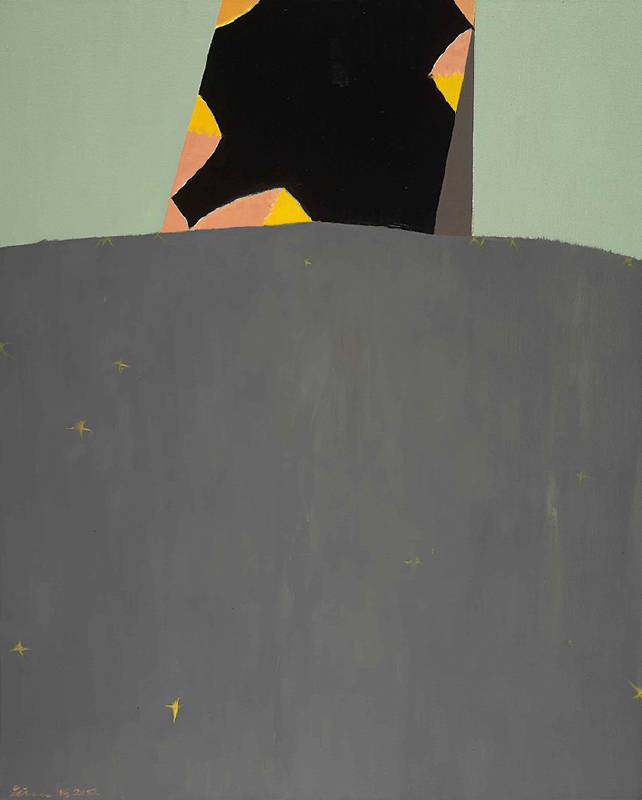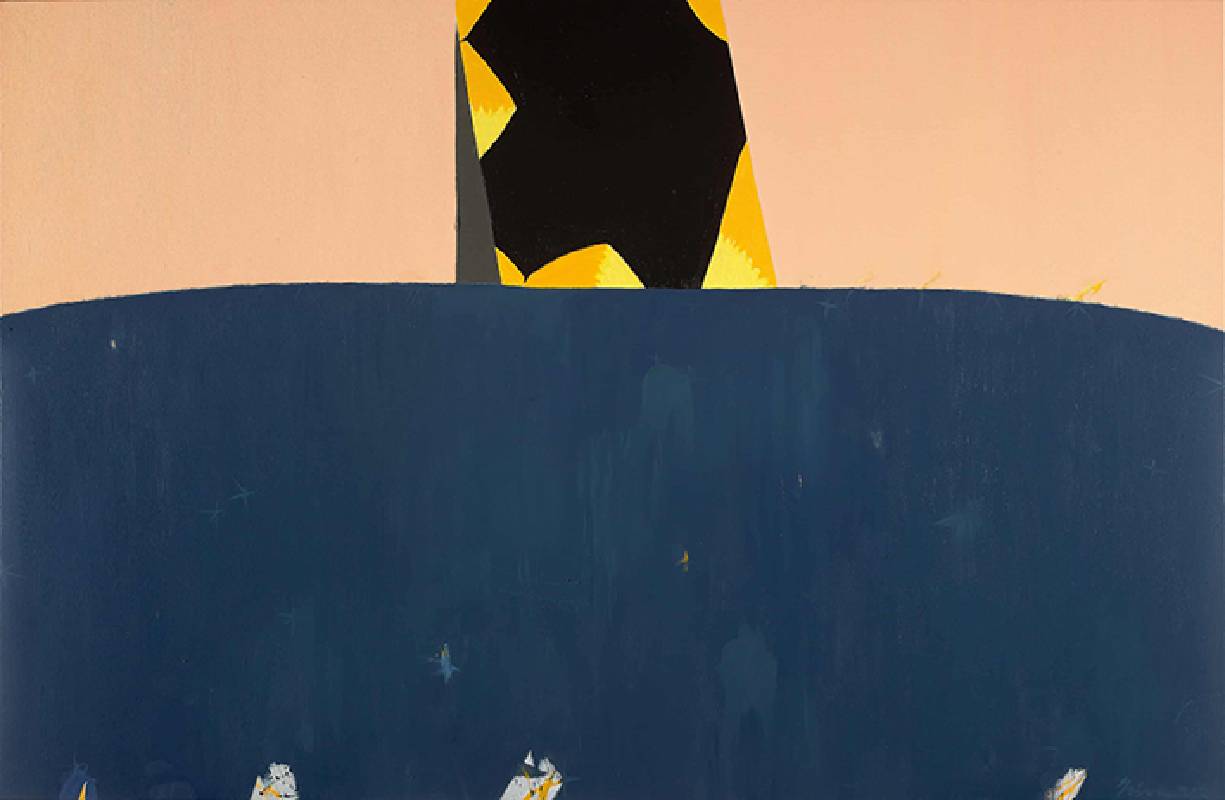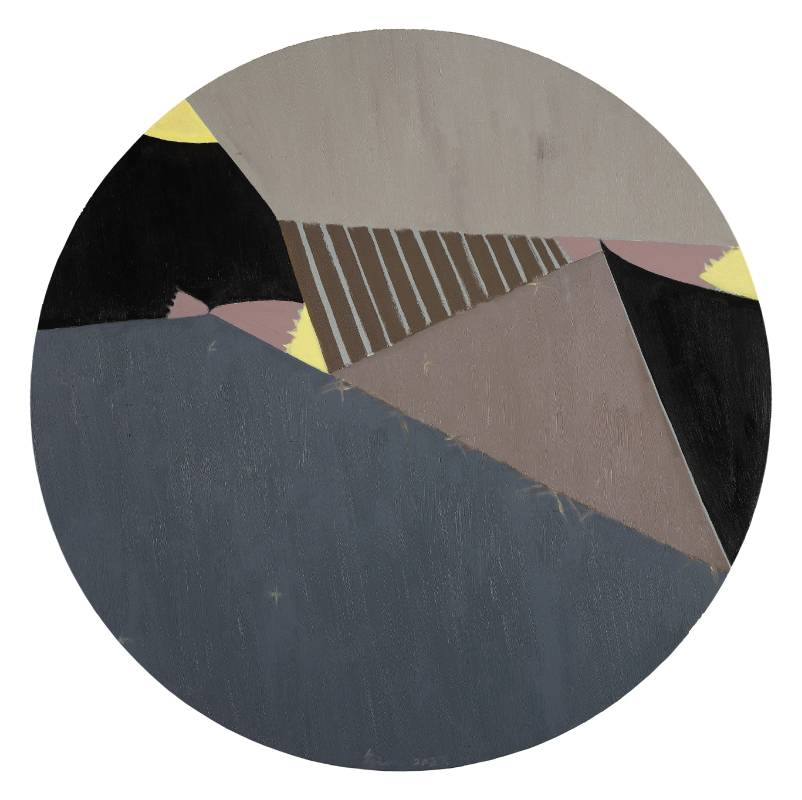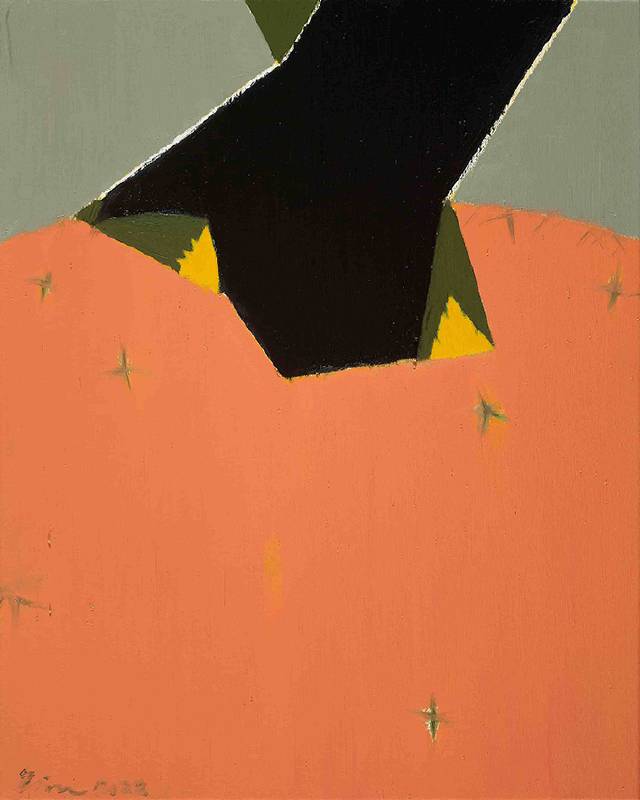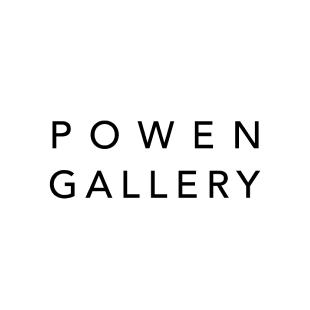紅野畫廊
【劉永仁 : 繪畫獨行】Liú Yung-jen: Cruising Alone in Painting

-
展期
日期:2022-11-19 ~ 2022-12-17
-
地點
台北市中山區松江路164巷11號
-
相關連結
Powen Gallery Instagram
Powen Gallery Facebook
Powen Gallery Website -
參展藝術家
劉永仁 Liú Yung-jen
-
劉永仁:繪畫獨行
Liú Yung-jen: Cruising Alone in Painting
展期 Duration|November 19 – December 17, 2022
開幕座談會 Artist Talk|November 19, 2022 Sat. 15:00 與談人 陳貺怡教授
地點 Venue|紅野畫廊 Powen Gallery(台北市中山區松江路164巷11號,10:00-19:00 週日及週一休館 Closed on Sundays & Mondays)
資訊 Info|www.powengallery.com
Artsy|https://www.artsy.net/partner/powen-gallery/artists/liu-yung-jen
「移情」與「遠看」的藝術—劉永仁的繪畫獨行
文 / 陳貺怡
(巴黎第十大學當代藝術史博士 / 國立臺灣藝術大學美術系所專任教授 / 美術學院院長)
劉永仁的作品經常會引起具象與抽象之間的爭論,不過這種爭論其實來自於誤將抽象與具象視為對立而非互補,並且未能清楚了解繪畫與其所欲再現的世界之間的複雜關聯。「抽象」的概念在二十世紀初的德語世界中悄然浮現,但其目的並非將世界與其再現一分為二,而是試圖釐清藝術家觀看與描繪世界時的心理過程。身兼心理學家與哲學家的利普斯(Theodor Lipps)提出「移情」(Einfühlung),將它定義為「自我感覺的客體化」,也就是「在它者中感覺自己」。此一它者即是藝術家的作品:透過冥想與層層的思考,由形、色、線條的安排達到形式的統一,正是藝術家自我的統一。他並且宣稱藝術是再現而非模仿,而藝術再現分為對「外在世界」與「內在世界」的再現。後者是靈魂精神生活的自我表現,線條與形透過內在思想的作用可以表現出歡愉、痛苦、憂鬱等等。如此,精神棲息於這些形:「是一種遙遠而廣大的視覺,一種對靈魂所獨有的深度的視覺。」深受利普斯美學理論,特別是「內在心理性」吸引的康定斯基,則提出「內在需要」作為藝術創作的原則,並且終於在1910年推出第一幅嚴格定義的抽象畫。也就是說,即便畫面中的形體難以辨識,「抽象」並未與繪畫的再現功能脫節,但他所再現的對象可內可外,重要的是他的深度視覺與形式/自我的統一。
劉永仁談自己的創作時經常使用「呼吸」作為隱喻,正是以人體的生理機能來隱喻藝術家的內在需求:「誠然是生命底層的欲求,一旦了解創作釋放靈魂的感覺,就無法停止創作,就好像活著無法停止呼吸。」而呼吸不單只是一種生理機能,更是一種生命體徵,故「呼吸」也同時隱喻了藝術家灌注於作品的生命氣息,正如上帝以塵土創造亞當,「將生氣吹在他的鼻孔裡,他就成了有靈的活人。」這種源於心理欲求的,對於既外且內的世界之再現過程,並無分抽象具象,東方西方,而是一種「生命」的統一,既是畫家的,也是畫作的。
雕塑家Hildebrand在1893年出版的著作《視覺藝術中的形式問題》(Das Problem der Form in der bildenden Kunst)中也提出另一組觀看方式的對照:「近看」(Nahbild)與「遠看」(Fernbild)。由於藝術並非自然的模仿,所以此二元對照組(dichotomy)是用來區分自然與藝術的差別:「近看」是生活中的正常視點,是投向有機自然之眼光;而「遠看」則是藝術的眼光,是生活中的「形」(Form)臣服於藝術的法則。「遠看」說明了藝術家看世界時的獨特視角,也說明了藝術與生活的差異:雖然藝術的形源於生活,甚至是「寫實」的,但它卻是純「形式建構的」(architectonic)。Hildebrand的好友藝術理論家Konrad Fiedler則透過觀察前者的創作,提出「純視覺性」(visualité pure),意指畫家在作品中賦予「視覺」以絕對的重要性,他在作畫時不再只單單思及如何呈現物/客體,而是思及繪畫與視覺(形式)的關係。
我們可以大膽推測「移情」與「遠看」是劉永仁創作時的心理歷程:他試圖在作品中「感覺自己」,但也從未脫離視覺再現的範疇,只是對於外在世界的再現並非他的目的,卻顯然地更著力於形式在畫面上的統一。因此我們是否可以合理的懷疑三幅圓形畫作:〈穿過無限1〉那一大片美麗卻略顯憂鬱的灰藍、〈穿過無限2〉那一大片歡快又秀色可餐的橘、〈穿過無限3〉那一大片燦爛且光彩奪目的黃,無不來自於畫家對世界一角或生活某個片段的感知,並「移情」於這些大片的色彩?這些以各種尺寸的筆刷塗佈的大片色面近乎「單色畫」(the Monochrome),而Denys Riout認為介於絕對與虛無之間的單色畫,是「缺乏再現的再現,不可視的可視」,但也因為這樣的空乏,使畫作充滿了強烈的意圖(intention)。
不過劉永仁並未畫單色畫,他總會在畫作的邊緣或中央打開墟隙,置入某些獨特的形,例如2010年代從蓮蓬或稻草堆發展而出、2021年演變成由幾個半橘半黃的三角形朝中間的黑色聚攏而成的矩形。此形彷彿生命體一般不斷變化,並在不同的畫作中重覆出現。它的大小與位置、整體與片段,暗示了視角的變換,拉近、拉遠,彷彿完美主義式的電影運鏡,反覆拍攝著令畫家癡迷的同一場景;或是那飛飄散落在每一幅畫中,微小低調朦朧的星形,看似毫不顯眼,卻能使大片的色面逃脫扁平單調與裝飾,開啟畫家意識的空間層次。在這簡單外表之下的現實,更因為言簡意賅而益發耐人尋味;且除了所欲再現的內外世界之外,還有畫家做工細膩的層層打底、無法忽視的材料表現(各種顏料、溶劑、筆刷、畫布、畫紙、鉛片、蜂蠟等等),與同中求異、異中求同的筆觸。繪畫似乎也以其材料的現實,與形式生命自身的運動,回應著畫家的行動。
我們因此可以斷言,畫家的「獨行」來自於在繪畫中為了感覺自我生命的存在而進行的私密「移情」;而作為客體的繪畫也以其形式的生命熱烈的唱和著、辯證著,甚至引領著畫家的內在視角,以至於這種「遠看」的創作過程,成了畫家與畫作互證存在的旅程。如果你質疑畫家為何樂此不疲,那是為了追求Henri Focillon定義下的「風格」:「因彼此契合而連結在一起的形式之緻密的整體/統一」,而「風格」總是針對「各個部分之間的最高契合點」。
—
Liú Yung-jen: Cruising Alone in Painting
Duration|November 19 – December 17, 2022
Artist Talk|November 19, 2022 Sat. 15:00
Venue|Powen Gallery(No. 11, Lane 164, Songjiang Road, Zhongshan District, Taipei City, Taiwan 10491 / 10:00-19:00 Closed on Sundays & Mondays)
Info|www.powengallery.com
Artsy|https://www.artsy.net/partner/powen-gallery/artists/liu-yung-jen
The Art of ‘Einfühlung’ (Empathy) and ‘Fernbild’ (‘The distant form of vision): The Artistic Journey of the Maverick Painter Liú Yung-jen
Chen Kuang-Yi
( Ph.D in Contemporary Art History at Universite Paris X Nanterre/ Professor, Dean of the Fine Arts College, National Taiwan University of Art)
The work of Liú Yung-jen often arouses passionate debate between the figurative and the abstract. But this contention is ensued from a misunderstanding of abstraction and figuration as opposites rather than complementary, and a failure to understand the complex relationship between painting and the world it seeks to represent. The concept of 'abstraction' emerged in the German-speaking world at the beginning of the 20th century. Its aim was not to divide the world from its re-presentation but to try to explicate the mental processes by which the artist perceives and portrays the world. Theodor Lipps, a psychologist and philosopher, coined the term ‘Einfühlung (Empathy)’ which he defined as 'the objectification of self-enjoyment', that is, 'feeling oneself into the Other'. This Other is the artist's work. A work that, through meditation and in-depth scrutiny, and by way of the arrangement of shape, colour and line, attains the unification of form, hence the unification of the artist's self. He declares that art is a re-presentation instead of an imitation and that artistic representation is split into the re-presentation of the 'external world' and the 'inner world'. The latter is a self-expression of the spiritual life, where lines and shapes can express pleasure, agony, melancholy and so on through the action of inner thought.
In such manner, the spirit inhabits these forms is a vision that is ‘distant and vast, and of depths unique to the soul.’ Kandinsky, who was fascinated by Lipps' aesthetic theory, particularly ‘intrinsic psychology', proposed the 'inner need' as a principle of artistic creation, and created, by strict definition, the first abstract painting in 1910. Despite the unrecognisable shape and structure of the painting, 'abstraction' was not divorced from the re-presentative function of painting, only that his object of re-presentation could be intrinsic or external, and what mattered was the depth of his vision and the unification of form/self. 'Breathing', a metaphor often employed when Liú talks about his artistic creation, is also an implication of the artist's inner needs using this physiological function of the human body. ‘It is a desire at the fundamental of life, and once one grasps the freeing of the soul through creation, there’s no way to stop creating, just as one cannot live without breathing.’ Breathing is not only a physiological function but also a symbol of life, inducing, at the same time, the analogy of the breath of life the artist breathes into his art, the same way God formed Adam from dust and ‘breathed into his nostrils the breath of life and man became a living soul.’ This process of re-presenting the world of the intrinsic and external, which originates from a psychological desire, resides not in the distinguishing between abstraction and figuration, East and West, but exists as a kind of 'life’s’ unification, both of the painter and the painting.
In his book Das Problem der Form in der bildenden Kunst (The Problem of Form in Painting and Sculpture), published in 1893, the sculptor Hildebrand also proposed another set of contrast between ways of seeing, namely ‘Nahbild’ (the nearby) and ‘Fernbild’(the distant). Since art is not an imitation of nature, this dichotomy is a distinction between nature and art. ‘Nahbild’ is the normal form of vision in life, a way of seeing into the organic nature, while ‘Fernbild’ is the aesthetic perspective, the subjugation of the 'form' of life to the laws of art. ‘Fernbild’ illustrates the artist's unique perspective on the world and the difference between art and life. Although art takes its form from life, even 'realistically', it is purely 'architectonic'. Hildebrand's friend, art theorist Konrad Fiedler, observes the former's body of work and introduces the term 'visualité pure', a discourse on how the painter gives absolute importance to the 'visual' in his work, that he no longer considers solely the presentation of the objects/the Other, but the relationship between the painting and the visual (form).
We can venture a hypothesis that Liú Yung-jen's artistic practice goes through the mental processes of 'Einfühlung' (Empathy) and 'Fernbild' (the distant form of vision). He attempts to 'feel himself' in his works but never is he strayed from the realm of visual re-presentation, only that the re-presentation of the external world is not his intent, but rather, the unification of form on the canvas. It is, therefore, reasonable to assume that the beautiful but slightly somber greyish blue in Through Infinity 1, the cheerful and luscious orange in Through Infinity 2, and the gleaming and luminous yellow in Through Infinity 3 in the three circular paintings, all come from the painter's perception and sensation of a slice of his life or a corner of the world, and then ' Einfühlung' to these swathes of colour. These vast expanses of colour, painted with brushes of various sizes, are almost 'the Monochrome', and Denys Riout believes that the monochrome between the absolute and the void is 'a re-presentation of a lack of re-presentation, a visibility of the invisible'. Yet because of this void, the paintings imbue strong intention.
But Liú does not paint in monochrome. He always opens up gaps at the edges or in the centre of his paintings and embeds distinctive forms, such as the series of works developed in the 2010s from the lotus or haystack and evolved in 2021 where the rectangle is formed by the interlacing of half-orange and half-yellow triangles emerged from the black. The form resembles a living organism that changes constantly and recurs in different paintings. Its size and composition, its totality and fragmentation, suggest shifts in perspective. Be it drawing closer or further away, it parallels the perfectionistic cinematography, repeatedly capturing the same scene that fascinates the painter. The tiny, subtle and hazy star-like forms that drift across each painting, seemingly restrained and unobtrusive, but escaping the flat monotony and ornamentation of the tract of colour, open up spatial layers in the painter's consciousness. The reality beneath this simple appearance is all the more intriguing for its simplicity, and for the fact that in addition to the intrinsic and external worlds the artist attempts to re-present, there are layers of meticulous underpainting, an inevitable expression of mediums (various paints, solvents, brushes, canvas, paper, lead, beeswax, etc.), and brush strokes that embraces the interplay between homogeneity and diversity. The painting seems to respond to the action of the painter with the reality of its mediums and the operation of the form itself.
Thus assertation could be made that the painter's ‘singular journey' is derived from an intimate 'Einfühlung' in order to feel the presence of his own life in the painting; and that the painting as the object also sings, debates and even guides the painter's inner perspective with the life of its form, so that this creative process of ‘Fernbild’ becomes a journey in which the painter and the painting validate each other's existence. If you wonder why the painter never grows tired of it, the delightful and ceaseless driving force lies in the pursuit of what Henri Focillon defines as 'style'. 'The dense uniformity/unification of forms that are connected with their compatibility’, and 'style' is always directed towards 'the highest point of affinity between the parts'.
-
REFERENCE
Powen Gallery Instagram
Powen Gallery Facebook
Powen Gallery Website
推薦展覽
view all紅野畫廊
【你們說,這片草原美不美?– 陳漢聲個展】Chen Han Sheng : Isn't It a Beautiful Meadow?
日期:2022-10-15 ~ 2022-11-05|台灣,台北市

